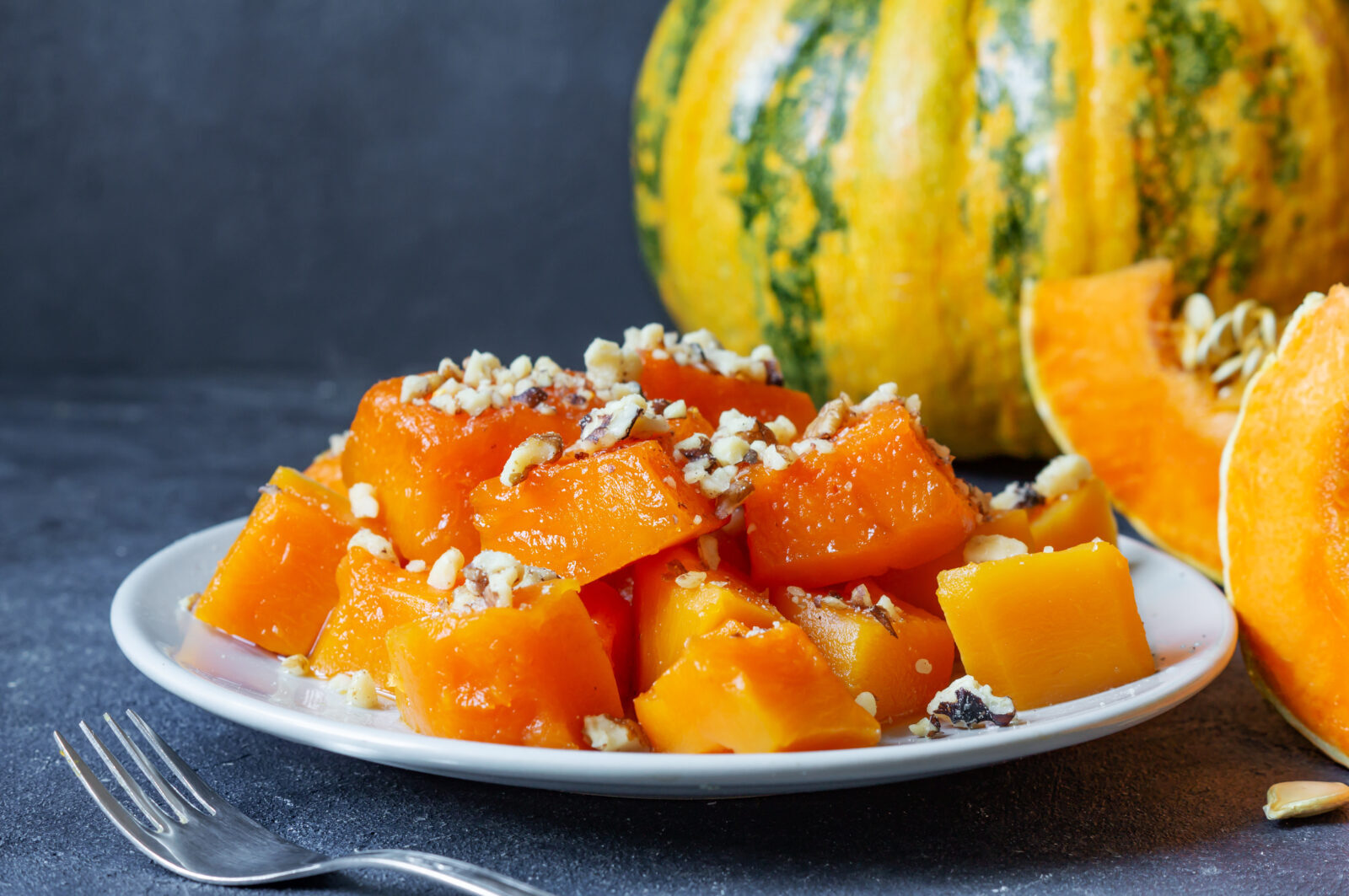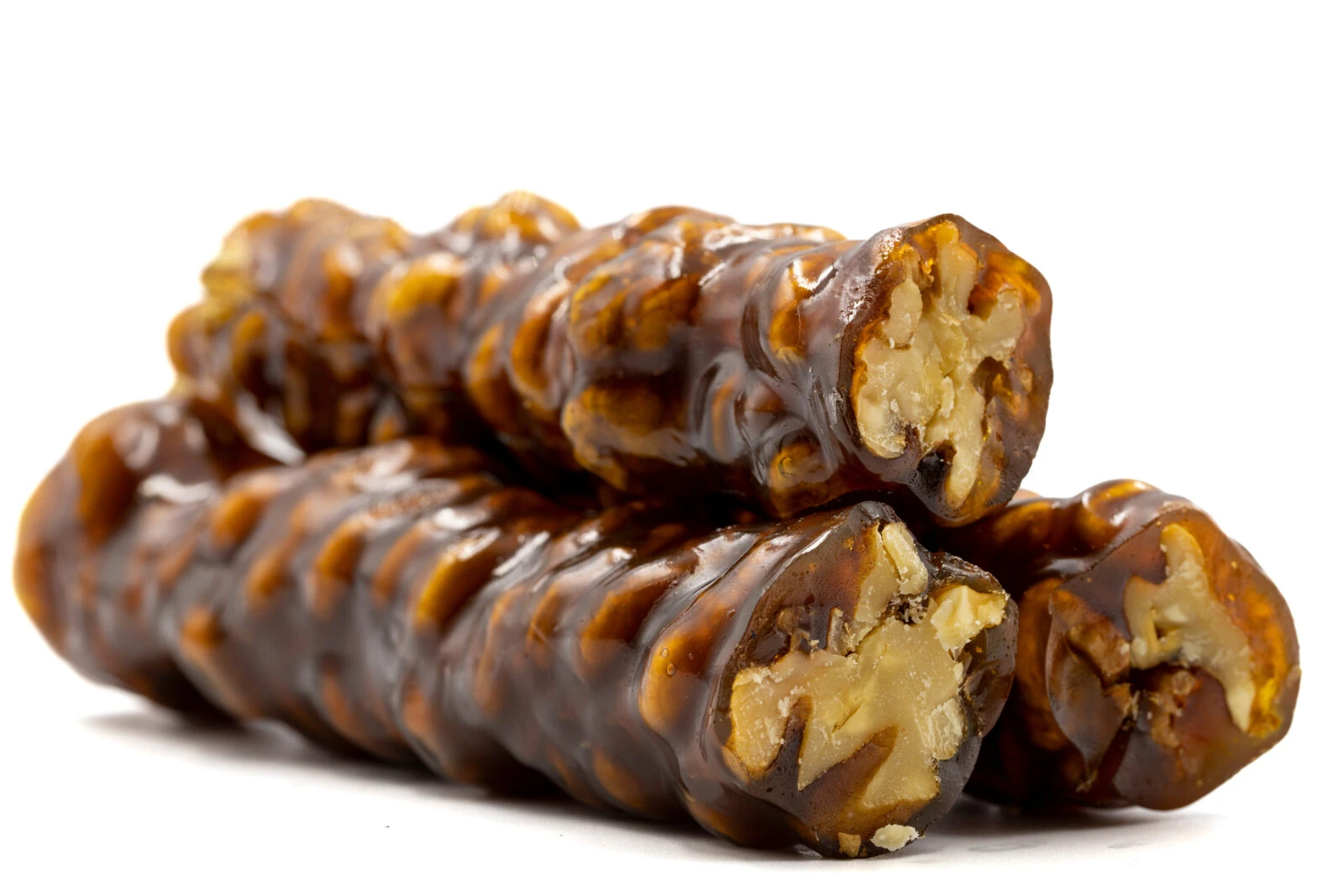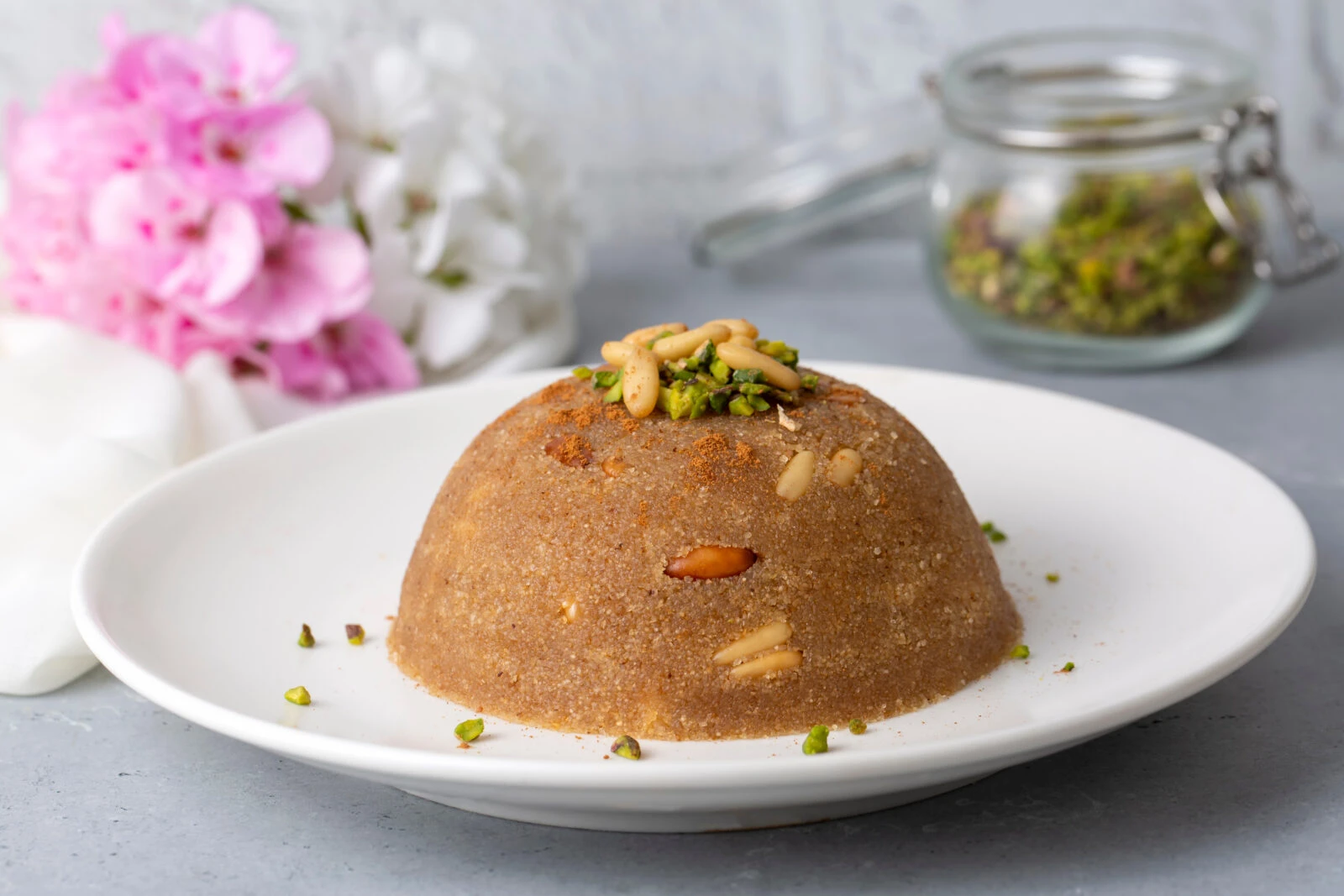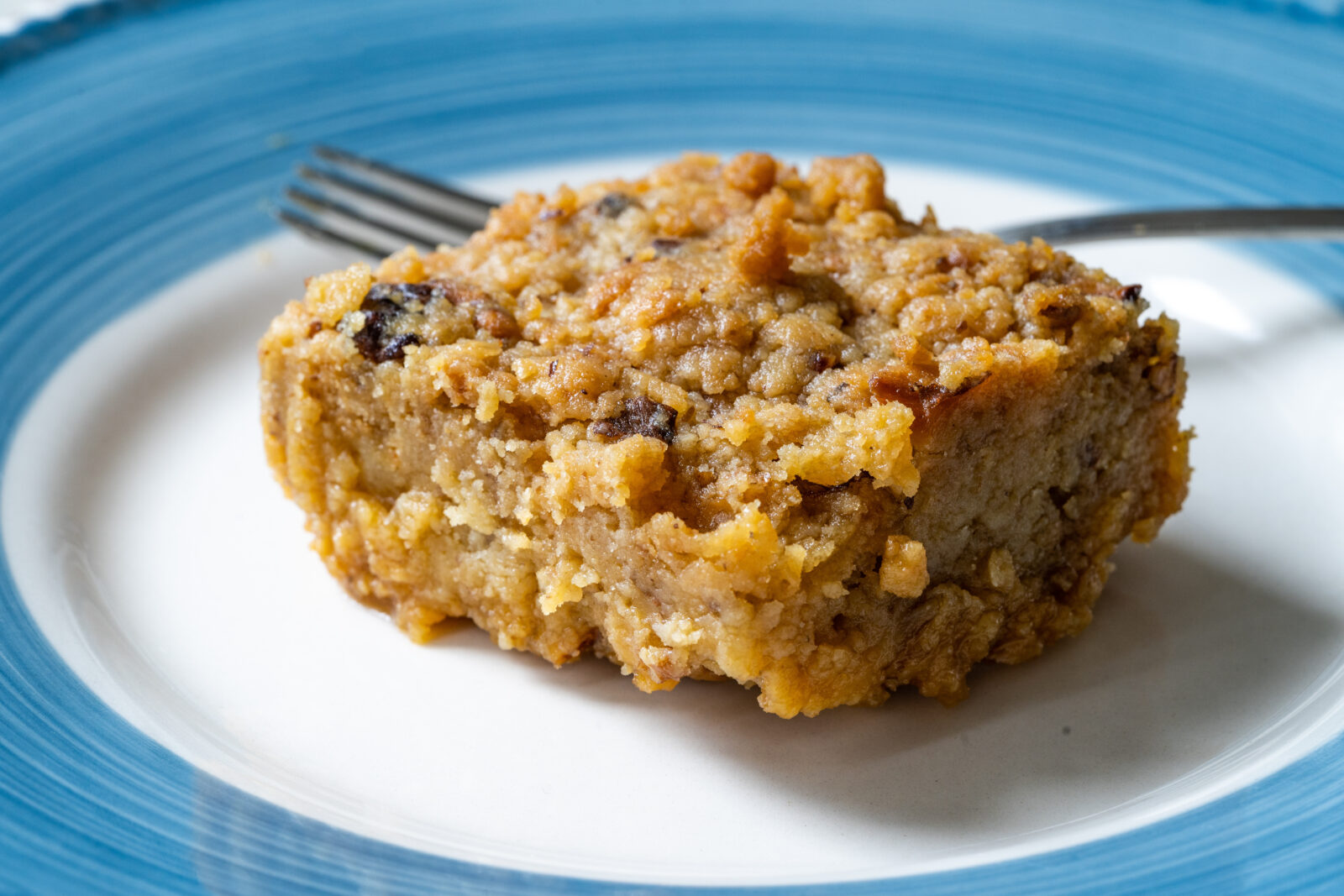5 healthy traditional Turkish desserts: How to make them at home
 A delightful spread of traditional Turkish desserts, including Cezerye (carrot treat), Sutlu Irmik Helvasi (semolina halva with milk), Asure (Noah’s pudding), and Nevzine (tahini and walnut dessert), Türkiye, Feb. 9, 2025. (Collage by Türkiye Today)
A delightful spread of traditional Turkish desserts, including Cezerye (carrot treat), Sutlu Irmik Helvasi (semolina halva with milk), Asure (Noah’s pudding), and Nevzine (tahini and walnut dessert), Türkiye, Feb. 9, 2025. (Collage by Türkiye Today)
There’s so much to love about Turkish cuisine, and one of its most underrated treasures is its diverse selection of delicious desserts – beyond the world-famous baklava and Turkish delight.
What often surprises visitors is how many traditional Turkish desserts are made with natural ingredients that not only satisfy your sweet tooth but also provide health benefits and energy boosts. From fruit-based treats to nutty delights and milk puddings, these historical sweets have been enjoyed for centuries.
So, let’s dive into the history of these sweet temptations, their significance in Turkish culture, and their easy recipes for you to try at home.

1. Quince and pumpkin sweet: Simple traditional Turkish dessert
Quince dessert (Ayva Tatlisi) has deep roots in Ottoman cuisine and is particularly associated with Bursa, the first capital of the Ottoman Empire. Bursa played a crucial role in shaping Ottoman palace cuisine, and this fruit-based delicacy became popular due to its natural sweetness. Traditionally, it is served with clotted cream (kaymak) and crushed walnuts.
Pumpkin dessert (Kabak Tatlisi) is another naturally sweetened treat that has been part of Turkish cuisine for centuries. It is particularly loved in the Aegean and Marmara regions, where pumpkin is abundant. It is commonly served with tahini and walnuts, which add nutritional value and enhance its flavor.
Simple recipe for a quick traditional Turkish dessert
Ingredients:
- 2 quinces (for Ayva Tatlisi) OR 500g pumpkin (for Kabak Tatlisi)
- 1 cup sugar
- 1 cup water
- Optional: cloves, cinnamon stick
- Toppings: clotted cream or whipped cream, crushed walnuts
Instructions:
- Peel and cut the quinces in half (or the pumpkin into chunks). Remove the quince cores and reserve the seeds.
- Place the fruit in a pot, sprinkle sugar evenly, and add water. For extra flavor, add a few quince seeds, cloves, or a cinnamon stick.
- Cover and simmer on low heat for 45 minutes to 1 hour until tender. The quinces should develop a reddish hue.
- Let cool before serving. Top with clotted cream or whipped cream and a sprinkle of crushed walnuts.

2. Asure (Noah’s pudding): Staple among traditional Turkish desserts
Asure, also known as Noah’s pudding, is one of the oldest known desserts in Anatolia. It is believed to have originated from the story of Noah’s Ark, where a mixture of leftover grains, legumes, and dried fruits was cooked together to create a nourishing dish.
Asure holds a special place in Turkish culture, especially during the Islamic month of Muharram, when it is prepared and shared with neighbors as a symbol of unity and generosity.
Asure is not only a beloved traditional Turkish dessert but also holds cultural significance in many other countries, including Greece, Armenia, Iran, Lebanon, and the Balkans. Each culture has its own variation, often prepared with a mix of grains, legumes, and dried fruits, symbolizing abundance, prosperity, and unity.
Simple recipe to make a delicious traditional Turkish dessert
Ingredients:
- 1 cup wheat berries (or barley)
- ½ cup cooked chickpeas
- ½ cup cooked white beans
- ½ cup dried apricots, diced
- ½ cup raisins
- ½ cup dried figs, diced
- 1 apple, peeled and diced
- 1 cup sugar (adjust to taste)
- 8 cups water
- Toppings: pomegranate seeds, chopped nuts, cinnamon
Instructions:
- Soak wheat berries overnight, then drain.
- In a large pot, combine soaked wheat berries with 8 cups of water and simmer until tender.
- Add cooked chickpeas, beans, and dried fruits. Simmer until the mixture thickens.
- Stir in sugar and diced apple, cooking for a few more minutes.
- Pour into bowls, let cool, and top with pomegranate seeds, chopped nuts, and cinnamon.

3. Nutty delight and carrot treat (Sucuk Lokum, Cezerye)
Nutty delight (Sucuk Lokum) has been part of Turkish confectionery for centuries. Unlike traditional Turkish delight (lokum), which is chewy and sugar-heavy, this variation consists of nuts strung together and dipped in thickened fruit molasses, making it a healthier, energy-boosting treat.
Carrot treat (Cezerye), originating from Mersin, gets its name from the Arabic word “jazari,” meaning carrot. Made with caramelized grated carrots, sugar, and nuts, it is a popular snack rich in vitamins and fiber.
Simple recipe for the tasty traditional Turkish dessert
Ingredients:
- 3 large carrots, grated
- ½ cup sugar
- ½ teaspoon cinnamon
- ½ teaspoon ground cloves (optional)
- ½ cup crushed walnuts or hazelnuts
- ½ cup shredded coconut (for coating)
Instructions:
- In a pan, cook the grated carrots and sugar over low heat until soft and caramelized, about 15 minutes.
- Add cinnamon, ground cloves, and crushed nuts, stirring well. Cook for another 5 minutes.
- Remove from heat and let cool slightly. Form the mixture into small balls or roll into a log shape.
- Coat with shredded coconut and let set before serving.
Simple recipe for nutty delight (sucuk lokum)
Ingredients:
- 2 cups grape juice (or pomegranate juice)
- ½ cup cornstarch
- ½ cup sugar
- 1 cup walnuts or hazelnuts
- String and needle
Instructions:
- Thread nuts onto a string to create a strand.
- In a saucepan, mix cornstarch, sugar, and juice. Stir continuously over medium heat until thickened.
- Dip the nut strands into the thickened mixture, ensuring they are coated. Hang to dry.
- Repeat the dipping process for a thicker layer. Let dry completely before cutting into pieces.

4. Semolina halva with milk (Irmik Helvasi)
Semolina halva (Irmik Helvasi) is a classic Turkish dessert with Ottoman roots. It is commonly prepared for special occasions, religious holidays, and gatherings. The milk version adds a creamier texture, making it richer while maintaining its light and nutty flavor.
Semolina halva holds a significant place in Turkish culture, especially during times of mourning. Traditionally, it is prepared and served by bereaved families to friends and relatives following the passing of a loved one. This practice symbolizes the transience of life and offers comfort to those grieving.
Beyond its association with mourning, this traditional Turkish dessert is also enjoyed during religious festivals and significant life events, such as moving to a new home.
Simple recipe to make this traditional Turkish dessert
Ingredients:
- 1 cup semolina
- 1 cup sugar
- 2 cups milk
- ½ cup butter
- Optional: pine nuts or chopped nuts
Instructions:
- Melt butter in a pan over medium heat. If using nuts, add them and sauté until golden.
- Add semolina and stir continuously, toasting until golden brown.
- In a separate pot, heat the milk and dissolve the sugar.
- Slowly pour the sweetened milk into the semolina, stirring to prevent lumps.
- Reduce heat and stir until thickened. Let rest for 10 minutes before serving.

5. Tahini and walnut dessert (Nevzine): Tasty traditional Turkish dessert
Nevzine is a traditional Ottoman dessert known for its unique syrup made with both sugar and grape molasses, distinguishing it from other syrup-based Turkish sweets.
It originates from Kayseri, and Kayseri Nevzinesi was officially registered as a geographical indication by the Turkish Patent and Trademark Office on November 22, 2021.
Simple recipe
Ingredients:
- 2 ½ cups all-purpose flour
- 1 cup tahini
- 1 cup crushed walnuts
- 1 cup butter, melted
- ½ cup yogurt
- 1 teaspoon baking powder
- For the syrup:
- 1 cup water
- 1 cup sugar
- ½ cup grape molasses
- 1 tablespoon lemon juice
Instructions:
- Preheat the oven to 350°F (180°C).
- In a bowl, mix butter, yogurt, tahini, and baking powder until well combined.
- Gradually add flour, kneading until a thick dough forms. Fold in the crushed walnuts.
- Press the dough into a greased baking tray, smoothing the top. Score into squares or diamonds before baking.
- Bake for 30–35 minutes, or until golden brown.
- While baking, prepare the syrup: in a saucepan, combine water, sugar, grape molasses, and lemon juice. Bring to a boil, then simmer for 5 minutes and let it cool slightly.
- Pour the warm syrup over the hot baked Nevzine, allowing it to fully absorb.
- Let it cool completely before slicing and serving.
Turkish desserts go far beyond the sugary indulgence of baklava and Turkish delight. Many traditional Turkish desserts reflect a deep connection to history, culture, and even communal rituals, making them more than just a way to satisfy cravings.
From Asure, a dish shared among neighbors for centuries, to Irmik Helvasi, a dessert that brings comfort in times of grief, each recipe carries a story. Desserts like Nevzine remind Ottoman-era ingenuity, blending tahini and grape molasses in a way that has stood the test of time. Meanwhile, energy-packed treats like Cezerye and Sucuk Lokum have sustained people for generations, proving that desserts can be both nutritious and delicious.
What makes these desserts special isn’t just their rich flavors – it’s their ability to bring people together, mark important life moments, and offer a glimpse into Türkiye’s diverse culinary landscape.



